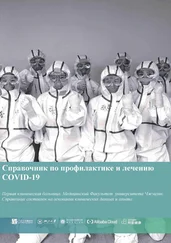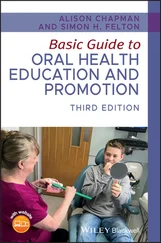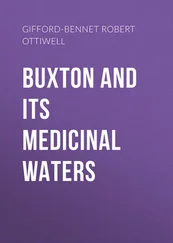S. R. Prabhu - Handbook of Oral Pathology and Oral Medicine
Здесь есть возможность читать онлайн «S. R. Prabhu - Handbook of Oral Pathology and Oral Medicine» — ознакомительный отрывок электронной книги совершенно бесплатно, а после прочтения отрывка купить полную версию. В некоторых случаях можно слушать аудио, скачать через торрент в формате fb2 и присутствует краткое содержание. Жанр: unrecognised, на английском языке. Описание произведения, (предисловие) а так же отзывы посетителей доступны на портале библиотеки ЛибКат.
- Название:Handbook of Oral Pathology and Oral Medicine
- Автор:
- Жанр:
- Год:неизвестен
- ISBN:нет данных
- Рейтинг книги:5 / 5. Голосов: 1
-
Избранное:Добавить в избранное
- Отзывы:
-
Ваша оценка:
- 100
- 1
- 2
- 3
- 4
- 5
Handbook of Oral Pathology and Oral Medicine: краткое содержание, описание и аннотация
Предлагаем к чтению аннотацию, описание, краткое содержание или предисловие (зависит от того, что написал сам автор книги «Handbook of Oral Pathology and Oral Medicine»). Если вы не нашли необходимую информацию о книге — напишите в комментариях, мы постараемся отыскать её.
Discover a concise overview of the most common oral diseases in a reader-friendly book Handbook of Oral Pathology and Oral Medicine
Handbook of Oral Pathology and Oral Medicine
Handbook of Oral Pathology and Oral Medicine — читать онлайн ознакомительный отрывок
Ниже представлен текст книги, разбитый по страницам. Система сохранения места последней прочитанной страницы, позволяет с удобством читать онлайн бесплатно книгу «Handbook of Oral Pathology and Oral Medicine», без необходимости каждый раз заново искать на чём Вы остановились. Поставьте закладку, и сможете в любой момент перейти на страницу, на которой закончили чтение.
Интервал:
Закладка:
Table of Contents
1 Cover
2 Title Page Handbook of Oral Pathology and Oral Medicine S. R. Prabhu BDS; MDS (Oral Path); FFDRCS (Oral Med); FDSRCS (Edin); FDSRCPS (Glas); FDSRCS (Eng), FFGDPRCS (UK); MOMed RCS (Edin); FICD. Honorary Associate ProfessorSchool of DentistryUniversity of QueenslandBrisbane, Australia
3 Copyright Page
4 Dedication Page
5 Foreword
6 Preface
7 Acknowledgements
8 About the Companion Website
9 Nomenclature Used in The Study of Human Disease
10 Standard Abbreviations for Prescribers
11 Part I: Pathology of Teeth and Supporting Structures 1 Disorders of Tooth Development and Eruption 1.1 Anodontia, Hypodontia and Oligodontia 1.2 Hyperdontia (Supernumerary Teeth) 1.3 Microdontia and Macrodontia 1.4 Gemination, Fusion and Concrescence 1.5 Taurodontism and Dilaceration 1.6 Amelogenesis Imperfecta 1.7 Dentinogenesis Imperfecta 1.8 Dentinal Dysplasia (Dentin Dysplasia) 1.9 Regional Odontodysplasia (Ghost Teeth) 1.10 Delayed Tooth Eruption 1.11 Tooth Impaction (Impacted Teeth) 1.12 Dens Invaginatus and Dens Evaginatus 1.13 Fluorosis (Mottled Enamel) 1.14 Tetracycline‐Induced Discoloration of Teeth: Key Features 1.15 Enamel Pearl: Key Features 1.16 Talon Cusp: Key Features 1.17 Hutchinson's Incisors and Mulberry Molars: Key Features 1.18 Tooth Ankylosis: Key Features 1.19 Supernumerary Roots: Key Features Recommended Reading 2 Dental caries 2.1 Definition/Description 2.2 Frequency 2.3 Aetiology/Risk Factors/Pathogenesis 2.4 Classification of Caries 2.5 Clinical Features 2.6 Differential Diagnosis 2.7 Diagnosis 2.8 Microsopic Features 2.9 Management 2.10 Prevention Recommended Reading 3 Diseases of the Pulp and Apical Periodontal Tissues 3.1 Classification of Diseases of the Pulp and Apical Periodontal Tissues 3.2 Pulpitis 3.3 Apical Periodontitis and Periapical Granuloma 3.4 Apical Abscess (Dentoalveolar Abscess) 3.5 Condensing Osteitis Recommended Reading 4 Tooth Wear, Pathological Resorption of Teeth, Hypercementosis and Cracked Tooth Syndrome 4.1 Tooth wear: Attrition, Abrasion, Erosion, and Abfraction 4.2 Pathological Resorption of Teeth 4.3 Hypercementosis 4.4 Cracked Tooth Syndrome Recommended Reading 5 Gingival and Periodontal Diseases 5.1 Classification of Gingival and Periodontal Diseases 5.2 Chronic Gingivitis 5.3 Necrotizing Periodontal Diseases 5.4 Plasma Cell Gingivitis 5.5 Foreign Body Gingivitis 5.6 Desquamative Gingivitis 5.7 Chronic Periodontitis 5.8 Aggressive Periodontitis 5.9 Fibrous Epulis (Peripheral Fibroma) 5.10 Peripheral Ossifying/Cementifying Fibroma 5.11 Peripheral Giant Cell Granuloma (Giant Cell Epulis) 5.12 Angiogranuloma (Pyogenic granuloma/pregnancy epulis) 5.13 Inflammatory Gingival Hyperplasia (Inflammatory Gingival Enlargement) 5.14 Generalized Gingival Hyperplasia in Pregnancy 5.15 Drug‐Induced Gingival Hyperplasia 5.16 Familial Gingival Hyperplasia 5.17 Gingival and Periodontal Abscesses 5.18 Pericoronitis/Pericoronal Abscess 5.19 Gingival Enlargement in Granulomatosis with Polyangiitis (Wegener's granulomatosis) 5.20 Gingival Enlargement in Leukaemia 5.21 Gingival Enlargement in Ascorbic Acid Deficiency Recommended Reading
12 Part II: Pathology of Jaw Bones 6 Infections and Necrosis of the Jaw 6.1 Acute Suppurative Osteomyelitis 6.2 Chronic Suppurative Osteomyelitis 6.3 Sclerosing Osteomyelitis 6.4 Proliferative Periostitis (Garre's Osteomyelitis) 6.5 Actinomycosis of the Jaw 6.6 Cervicofacial Cellulitis (Cervicofacial Fascial Space Infection) 6.7 Osteoradionecrosis of the Jaw 6.8 Medication‐Related Osteonecrosis of the Jaw Recommended Reading 7 Cysts of the Jaw 7.1 Radicular, Lateral Radicular, and Residual Radicular Cysts 7.2 Dentigerous Cyst 7.3 Eruption Cyst 7.4 Odontogenic Keratocyst (Keratocystic Odontogenic Tumour) 7.5 Lateral Periodontal Cyst 7.6 Calcifying Odontogenic Cyst 7.7 Orthokeratinized Odontogenic Cyst: Key Features 7.8 Glandular Odontogenic Cyst: Key Features 7.9 Nasopalatine Duct Cyst (Incisive Canal Cyst) 7.10 Pseudocysts of the Jaw: Solitary Bone Cyst, Aneurysmal Bone Cyst and Stafne's bone Cyst 7.11 Nasolabial Cyst: Key Features Recommended Reading 8 Odontogenic Tumours 8.1 World Health Organization Classification of Odontogenic Tumours (2017) 8.2 Ameloblastoma 8.3 Unicystic Ameloblastoma 8.4 Squamous Odontogenic Tumour 8.5 Calcifying Epithelial Odontogenic Tumour (Pindborg Tumour) 8.6 Adenomatoid Odontogenic Tumour 8.7 Ameloblastic Fibroma 8.8 Ameloblastic Fibrodentinoma and Ameloblastic Fibro‐Odontome 8.9 Odontome (Odontoma) 8.10 Dentinogenic Ghost Cell Tumour 8.11 Odontogenic Myxoma 8.12 Odontogenic Fibroma (Central Odontogenic Fibroma) 8.13 Cementoblastoma Recommended Reading 9 Non‐odontogenic Benign and Malignant Tumours of the Jaw 9.1 Osteoma 9.2 Multiple Osteomas in Gardner's Syndrome 9.3 Central Haemangioma (Intraosseous Haemangioma) 9.4 Melanotic Neuroectodermal Tumour of Infancy 9.5 Osteosarcoma 9.6 Chondrosarcoma: Key Features 9.7 Ewing's Sarcoma 9.8 Myeloma (Multiple Myeloma) 9.9 Solitary Plasmacytoma 9.10 Burkitt's Lymphoma Recommended Reading 10 Fibro‐Osseous and Related Lesions of the Jaw 10.1 Ossifying Fibroma/Cemento‐Ossifying Fibroma 10.2 Cemento‐Osseous Dysplasias 10.3 Familial Gigantiform Cementoma: Key Features 10.4 Central Giant Cell Granuloma Recommended Reading 11 Genetic, Metabolic, and Other Non‐neoplastic Bone Diseases 11.1 Osteogenesis Imperfecta 11.2 Cleidocranial Dysplasia 11.3 Cherubism 11.4 Gigantism and Acromegaly 11.5 Brown Tumour of Hyperparathyroidism 11.6 Paget's Disease of Bone (Osteitis Deformans) 11.7 Fibrous Dysplasia and McCune–Albright Syndrome 11.8 Mandibular and Palatine Tori: Key Features 11.9 Focal Osteoporotic Bone Marrow Defect: Key Features Recommended Reading
13 Part III: Pathology of the Oral Mucosa 12 Developmental Anomalies and Anatomical Variants of Oral Soft Tissues 12.1 Fordyce Granules: Key Features 12.2 Double Lip: Key Features 12.3 Leukoedema: Key Features 12.4 Ankyloglossia: Key Features 12.5 Geographic Tongue: Key Features 12.6 Hairy Tongue: Key Features 12.7 Fissured Tongue: Key Features 12.8 Lingual Thyroid: Key Features 12.9 Microglossia and Macroglossia: Key Features 12.10 Bifid Tongue: Key Features 12.11 Bifid Uvula: Key Features 12.12 Cleft Lip: Key Features 12.13 Calibre Persistent Labial Artery: Key Features 12.14 Epstein's Pearl and Bohn's Nodules: Key Features 12.15 Dermoid and Epidermoid Cysts: Key Features 12.16 Oral Varicosities: Key Features 12.17 Lymphoid Aggregates: Key Features 12.18 Parotid Papilla: Key Features 12.19 Circumvallate Papillae: Key Features 12.20 Physiological Pigmentation: Key Features Recommended Reading 13 Bacterial Infections of the Oral Mucosa 13.1 Scarlet Fever: Key Features 13.2 Syphilis 13.3 Gonorrhoea: Key Features 13.4 Tuberculosis Recommended Reading 14 Fungal Infections of the Oral Mucosa 14.1 Candidosis (Candidiasis) 14.2 Histoplasmosis 14.3 Blastomycosis: Key Features Recommended Reading 15 Viral Infections of the Oral Mucosa 15.1 Primary Herpetic Gingivostomatitis (Primary Herpes) 15.2 Herpes Labialis 15.3 Varicella (Chickenpox) 15.4 Herpes Zoster (Shingles) 15.5 Infectious Mononucleosis (Glandular Fever) 15.6 Oral Hairy Leukoplakia: Key Features 15.7 Cytomegalovirus Infection: Key Features 15.8 Herpangina: Key Features 15.9 Hand, Foot, and Mouth Disease 15.10 Squamous Papilloma 15.11 Condyloma Acuminatum: Key Features 15.12 Multifocal Epithelial Hyperplasia: Key Features 15.13 Verruca Vulgaris: Key Features 15.14 Measles: Key Features Recommended Reading 16 Non‐infective Inflammatory Disorders of the Oral Mucosa 16.1 Recurrent Aphthous Stomatitis 16.2 Oral Lichen Planus 16.3 Oral Lichenoid Lesions 16.4 Pemphigus Vulgaris 16.5 Mucous Membrane Pemphigoid 16.6 Erythema Multiforme 16.7 Lupus Erythematosus: Key Features 16.8 Traumatic Ulcer: Key Features 16.9 Oral Lesions in Behcet's Disease/Syndrome 16.10 Oral Lesions in Crohn's Disease 16.
Читать дальшеИнтервал:
Закладка:
Похожие книги на «Handbook of Oral Pathology and Oral Medicine»
Представляем Вашему вниманию похожие книги на «Handbook of Oral Pathology and Oral Medicine» списком для выбора. Мы отобрали схожую по названию и смыслу литературу в надежде предоставить читателям больше вариантов отыскать новые, интересные, ещё непрочитанные произведения.
Обсуждение, отзывы о книге «Handbook of Oral Pathology and Oral Medicine» и просто собственные мнения читателей. Оставьте ваши комментарии, напишите, что Вы думаете о произведении, его смысле или главных героях. Укажите что конкретно понравилось, а что нет, и почему Вы так считаете.












